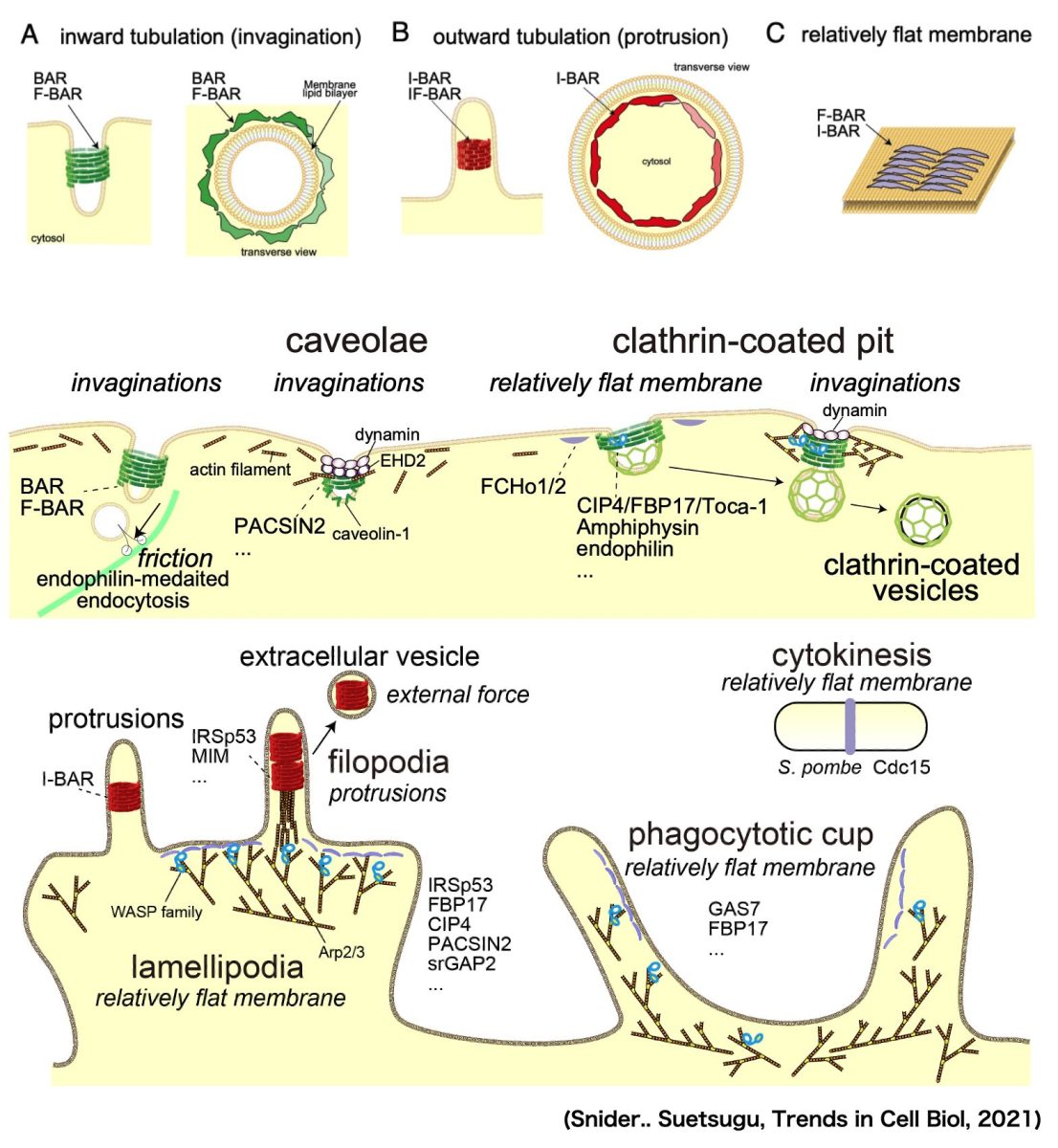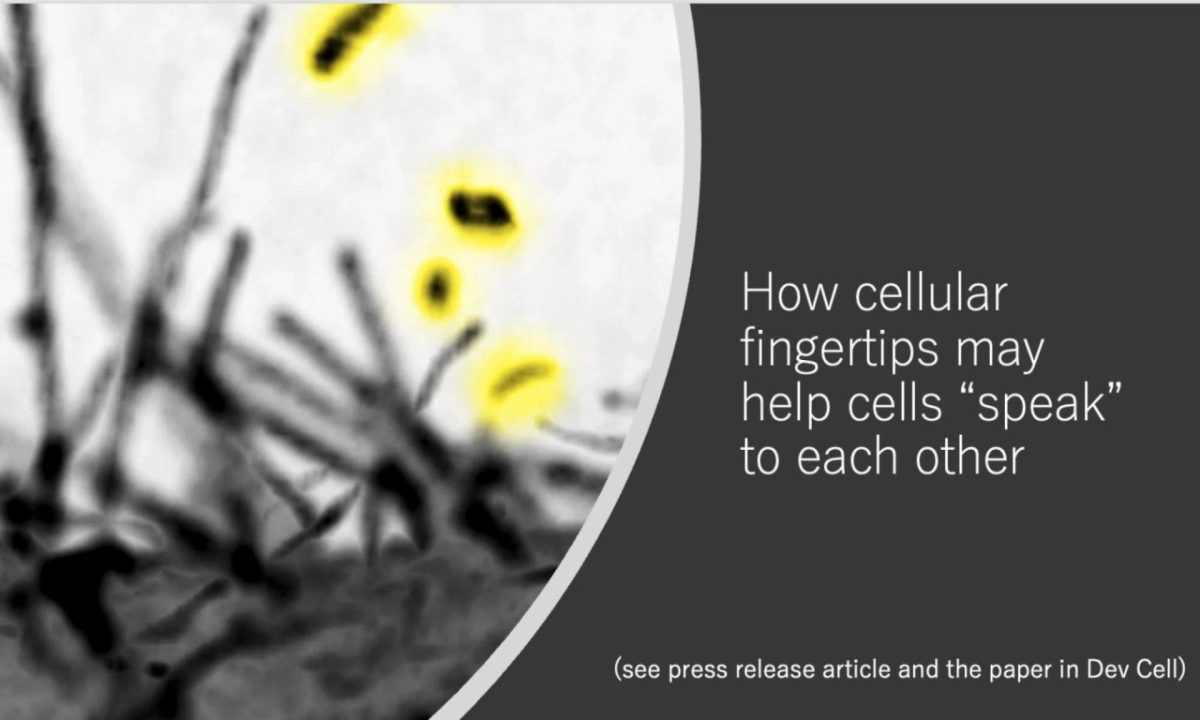Membrane and the Cytoskeleton
Each type of cells has specific shape that is determined by the plasma membrane.
The shape of plasma membrane is determined by support of the cytoskeleton. Our lab will focus on the mechanisms connecting the membrane to the cytoskeleton.
The responsible molecules will be the “interface” between the membrane and the cytoskeleton, that may be indispensable for special “shape” of each type of cells.
Currently, we are focusing on the proteins that connect membrane and cytoskeleton. These proteins include FBP17, Toca-1, syndapin, and IRSp53.
Press Lease Articles: 2019, 2021-1, 2021-2, Journal interview 2020, First Author Interview.


Elucidating cell-shape dependent inter/intracellular signaling
The intracellular signaling cascade became understood by observing molecule-molecule interactions. However, the spatial organization of these signaling cascades has not been studied so well. We found the BAR domain superfamily proteins that remodel membrane shape and then, presumably, dictate the intracellular signaling cascades. Thus, the important questions are how the BAR domain superfamily proteins are regulated, and how they assemble the downstream molecules.
The extracellular vesicles
The BAR domains are involved in the membrane invaginations for clathrin-coated pits, caveolae, and so on. These invaginations are pitched off to the endocytic vesicles. The I-BAR domains are involved in the membrane protrusions for filopodia and microvilli. These protrusions are also found to be pinched off to the extracellular vesicles (EVs). EVs can transmit the materials between the cells and mediate inter-cellular communications in every biological phenomenon, including senescence, cancer onset, and progression, as well as differentiation.
Searching for new membrane-binding proteins
Given the importance of membrane lipids as essential components of cells, we suppose there are many lipid-binding molecules that have not been clarified. We are searching for novel lipid-binding proteins using a variety of methods.
The importance of fatty acids in the membrane.
Another point for understanding the cellular membrane is the importance of the fatty-acid tails of lipids. Although the importance of saturated or unsaturated lipids in nutrients is well-known, the mechanism of importance is not understood at molecular levels in cell biology. We will examine how fatty acids are important in intracellular signaling including that for cancer, using the proteins listed above.
Press Lease Articles: 2019, 2021-1, Journal interview 2020, First Author Interview.
Application of data science to cell biology.
The above complexity of proteins and lipids results in the complex cell morphology. The complex cell morphology can be divided into subcellular structures, which can be described using proteins and lipids. To understand such complexity and the connectivity between subcellular structures, we will cross-correlate the localizations of the proteins and the lipid membrane in space and time by using information technologies including deep-learning. The expected results will compensate the above research and also will predict the behavior of the cells.
Press Lease Articles: 2021-2

